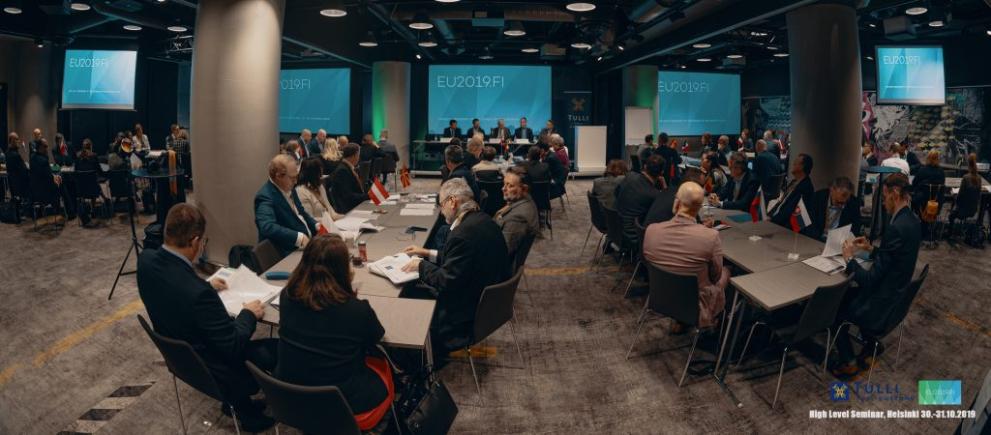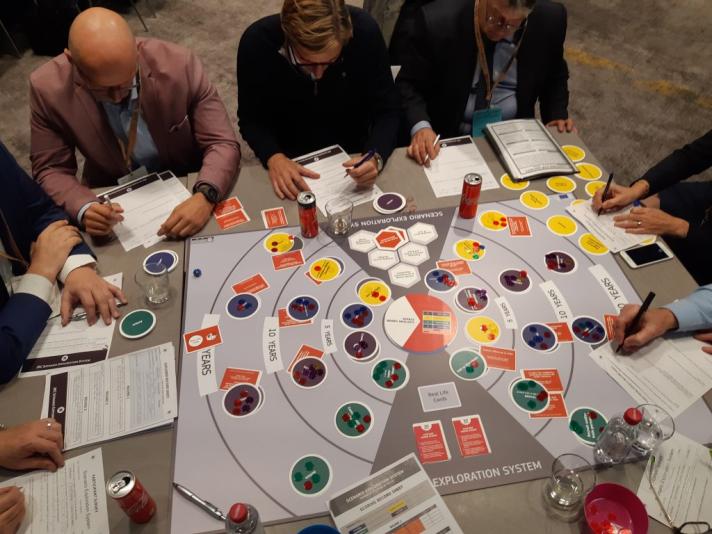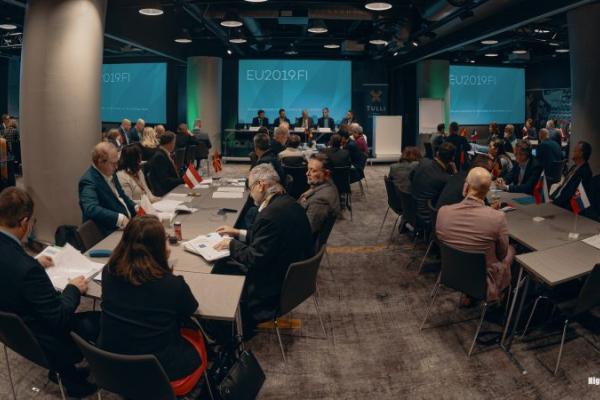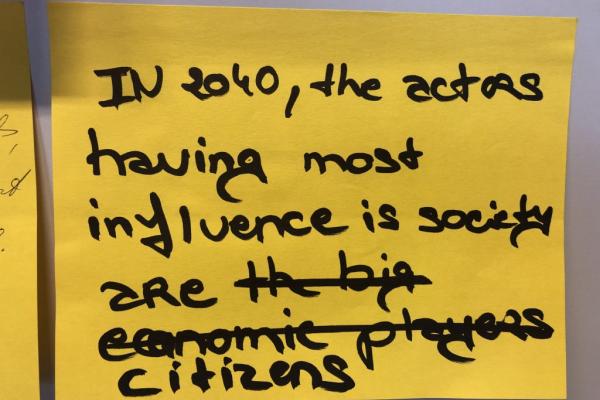
The top rungs of customs administrations across the EU explore future scenarios at the Helsinki High-Level Seminar on Strategic Foresight and the Future of the Customs Union.
How could different futures affect me? Have you ever wondered? The Scenario Exploration System (SES) was designed to help you do just that. It puts you on the spot and challenges you to dive into alternative future scenarios.
This is what a group of high-level participants from customs administrations from all over Europe experienced last October 30th at the Helsinki High Level Seminar on Strategic Foresight and the Future of the Customs Union organised by the Finnish Presidency of the EU.
At that event, we launched a specific Customs edition of the SES developed by the foresight project run by the Joint Research Centre and the Directorate General for Taxation and the Customs Union (DGTAXUD) of the European Commission. This engagement tool (available under a CC-SA-BY Creative Commons licence) may be of interest to any policymakers or stakeholders having to deal with customs in the EU, whether European or not.
From the left: Mr Kunio Mikuriya, Secretary General of the World Customs Organisation, Ms Marta Guelbenzu, Spanish Customs, and Mr Brane Gregorič , Slovenian Customs. Photo: Finnish Customs
Over 80 participants, most of them Directors General, Deputy Directors Generals, Directors and key collaborators from customs administrations engaged in scenario explorations. They did this in groups of about 10 at different tables. At each table, people took up four different roles of scenario explorers as ‘customs policy maker’, ‘other policy maker’, ‘European trader’ and ‘non-European trader’. Others acted as the ‘Voice from society’ and got to judge the actions taken by the others according to their own bias. One other person at each table represented the media. A scenario exploration goes through three rounds (5, 10 and 20 years into the future). At the end of each round, the media gave their perspective on what had happened in that round through two sharp headlines. They also fulfilled a function of ‘content harvester’ to contribute to answer the strategic questions around which the event had been organised. To really understand what a scenario means, the participants were made to explore two contrasting futures in the same roles and trying to fulfil the same objectives.
In this event participants faced scenarios of how the EU customs system could look like in 2040. While they took up roles they were familiar with, the scenarios were both realistic and challenging enough to create surprise, thereby fostering openness and ‘out-of-the-box’-thinking. This was the ‘conditioning’ applied to prepare the afternoon brainstorming, where small groups were guided by the following strategic questions:
- What were the key elements for the future of customs that emerged from the scenario exploration through the Scenario Exploration System?
- What are the current strengths and weaknesses of the Customs Union?
- How do you see the future state of the Customs Union (2040)?
In summary, the participants experienced possible futures before engaging in a strategic reflection on the preferred future of customs in the EU. The latter forms a part of a visioning process that is now starting in our foresight project.
In the feedback from the participants, we could see that his High Level Seminar stood as innovative and forward-looking compared to what they are used to. On the second day, the outcome of the discussions was shared with all participants and a declaration was adopted stating an agreement to “apply Strategic Foresight in a systematic fashion to support the development and future-proofing of the EU Customs Union”. We are confident this can help bring the Customs Union to the next level.
Details
- Publication date
- 18 November 2019
- Author
- Joint Research Centre
- EU Policy Lab tags



